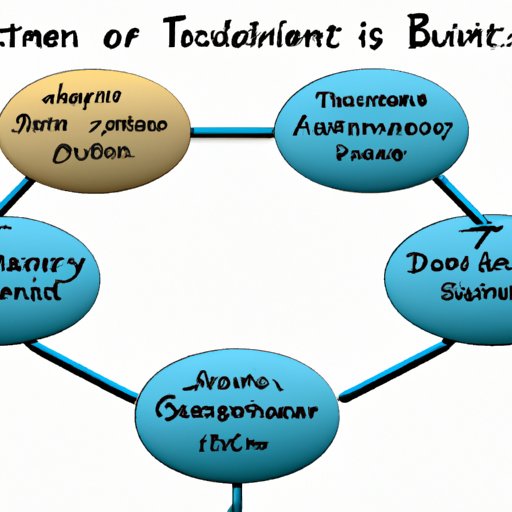Introduction
A trust is a legal arrangement that allows a third party, known as a trustee, to hold assets on behalf of a beneficiary or beneficiaries. A trust can be used for many purposes, including asset protection, tax advantages, and avoidance of probate. This article will explore the basics of trusts, including what is a trust and how does it work, common types of trusts, the benefits of establishing a trust, the role of beneficiaries in trusts, the tax implications of trusts, and the process of settling a trust. Alternatives to trusts for asset protection will also be discussed.
Explaining the Basics of Trusts: What is a Trust and How Does it Work?
A trust is a legal relationship between three parties: the settlor (also known as the grantor or trustor), the trustee, and the beneficiary. The settlor is the person who creates the trust and transfers assets into it. The trustee is the person or organization responsible for managing the trust assets and carrying out the instructions of the settlor. The beneficiary is the person or organization who receives the benefit of the trust assets.
How does a trust work? The settlor transfers ownership of the assets to the trustee, who holds the assets in the trust on behalf of the beneficiary. The trustee has a fiduciary duty to manage the trust assets according to the instructions of the settlor. The trustee must act in the best interest of the beneficiary and ensure that the trust assets are managed responsibly.
Anyone over the age of 18 can create a trust. However, a trust must be created in accordance with state and federal laws. In addition, the settlor must be of sound mind and have the capacity to understand the terms and conditions of the trust.
Examining Common Types of Trusts: Revocable vs. Irrevocable, Living vs. Testamentary
Trusts can be divided into two categories: revocable and irrevocable. A revocable trust is one in which the settlor retains control over the trust assets and can amend or revoke the trust at any time. An irrevocable trust, on the other hand, is one in which the settlor relinquishes all control over the trust assets and cannot make any changes to the trust without the consent of the beneficiaries.
Trusts can also be classified as either living trusts or testamentary trusts. A living trust is one that is created during the settlor’s lifetime. A testamentary trust, on the other hand, is one that is created as part of a will and takes effect upon the death of the settlor.
Exploring the Benefits of Establishing a Trust
There are several benefits to establishing a trust. One of the primary benefits of a trust is asset protection. Assets held in a trust are not subject to the claims of creditors and can be protected from lawsuits. Trusts can also provide tax advantages, as some trusts are exempt from certain taxes, such as estate taxes. Additionally, trusts can be used to avoid probate, which is the process by which assets are distributed after the death of the settlor.

Understanding the Role of Beneficiaries in Trusts
Beneficiaries play an important role in trusts. The beneficiaries are the individuals or organizations that receive the benefit of the trust assets. They may be entitled to income from the trust, or they may receive a lump sum distribution of the trust assets upon the death of the settlor. Beneficiaries also have the right to receive information about the trust and to request that the trustee take certain actions relating to the trust.
Analyzing the Tax Implications of Trusts
Trusts are subject to various taxes, including estate taxes, gift taxes, and income taxes. Estate taxes are imposed on the transfer of assets from the settlor to the trust. Gift taxes are imposed on gifts made to the trust. Income taxes are imposed on any income earned by the trust, such as interest or dividends.

Investigating the Process of Settling a Trust
Once a trust is established, the trustee must take steps to settle the trust. This includes collecting and organizing the trust assets, paying any debts or taxes owed, and distributing the remaining assets to the beneficiaries. The trustee must also keep accurate records of all transactions related to the trust and provide regular reports to the beneficiaries.

Exploring Alternatives to Trusts for Asset Protection
In addition to trusts, there are other options available for asset protection. Limited liability companies (LLCs) provide limited liability protection for owners, meaning that the LLC’s assets are separate from the owners’ personal assets. Family limited partnerships (FLPs) allow family members to pool their assets and limit their liability. Charitable trusts, such as charitable remainder trusts and charitable lead trusts, allow donors to make donations to charity while receiving a tax deduction.
Conclusion
Trusts are a powerful tool for asset protection, tax planning, and estate planning. They can be used to protect assets from creditors, provide tax advantages, and avoid probate. There are different types of trusts, such as revocable and irrevocable trusts, living and testamentary trusts, and charitable trusts. Beneficiaries of a trust have certain rights and responsibilities, and trusts are subject to various taxes. Finally, there are alternatives to trusts, such as LLCs, FLPs, and charitable trusts, that can also provide asset protection.
(Note: Is this article not meeting your expectations? Do you have knowledge or insights to share? Unlock new opportunities and expand your reach by joining our authors team. Click Registration to join us and share your expertise with our readers.)
